Ever wished that your photographs of fish looked as pretty as the fish themselves? I'm guessing most of us have. Here are a few of the things I think about when photographing fish. Perhaps you'll find value in them too.
Foremost in my mind is an appreciation for what the fish have provided in the way of sport. If I'm going to ask for their picture as well as for the excitement of their capture, I feel a responsibility to accord them a certain measure of respect. I try to show them off in a pleasing manner. I try to make the photograph about them, and not about the angler or about me as the photographer. No hero shots, no funky poses, no unusual lens effects.
You may feel differently. If, for example, you'd like to include the angler in your picture, think about having him or her look at the fish and not at the camera. Doing so directs viewer attention to the fish, which is sort of the point. (You can have your picture taken anytime.)
Photographing fish by yourself is difficult. And it can be hard on the fish. It's always better to seek the help of a friend. Both you and the fish will be glad you did.
Focus your camera on the eye of the fish. As in all wildlife photography, if the eye is sharp, everything else in the photo—sharp or not—will appear acceptable. If the eye isn't sharp, nothing about the photo will look good.
Don't remove the fish from the water until the camera is ready and limit the fish's time out of water to 2-3 seconds. If you wish to reshoot, put the fish back in the water between pictures.
Hold the fish with the front hand facing palm out and the back hand facing palm in (see photo), which shows off the fish in an attractive manner. Whenever a fish is held with both palms facing out it always strikes me as awkward looking, for the angler as well as the fish.
As much as possible, keep the thumb and palm of your front hand hidden behind the fish. Doing so provides an uninterrupted view of an important body line. Same goes for the fingers of the front hand; keep them out of view as best you can. I like the back hand as far back as possible while still supporting the fish. Try holding fish smaller than 16″ in one hand. I think they look best that way.
Hold the fish no higher than an inch or so above the water. This is good for the fish in case it slips from your hands, and it also maintains a visual connection between the fish and its habitat. Isolate the fish from its environment and you'll end up with a photo of, well, a fish out of water. Consider, too, bringing the camera down to the fish's level; it's a more pleasing perspective than shooting from high overhead.
If the light is bright and direct, having it strike the side of the fish facing the camera is preferable in most situations.
This isn't everything involved with photographing fish, and I certainly understand it's not the only way. Personal photographic preferences play an important role in how we decide to record our catch. But give these suggestions a try and I think you'll find your pictures to be not only respectful of your quarry, but eye-pleasing to boot.






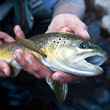
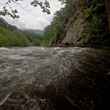



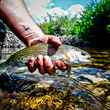


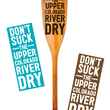




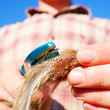
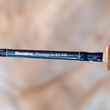




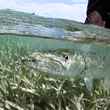





Comments
denis ransmeier replied on Permalink
Appreciated your story on photographing fish. A few years ago I bought a GoPro so I could make videos when stillwater fishing for trout in my pram. Since I fish C&R alone, getting the action filmed and the fish released is hard. Would love to see an article on filming fly fishing solo with GoPro.
Christopher replied on Permalink
Please stop promoting the taking of photos of catch and release fish. Reel it in, get the hook out of it's mouth, and put it back in the water, please.
Pages